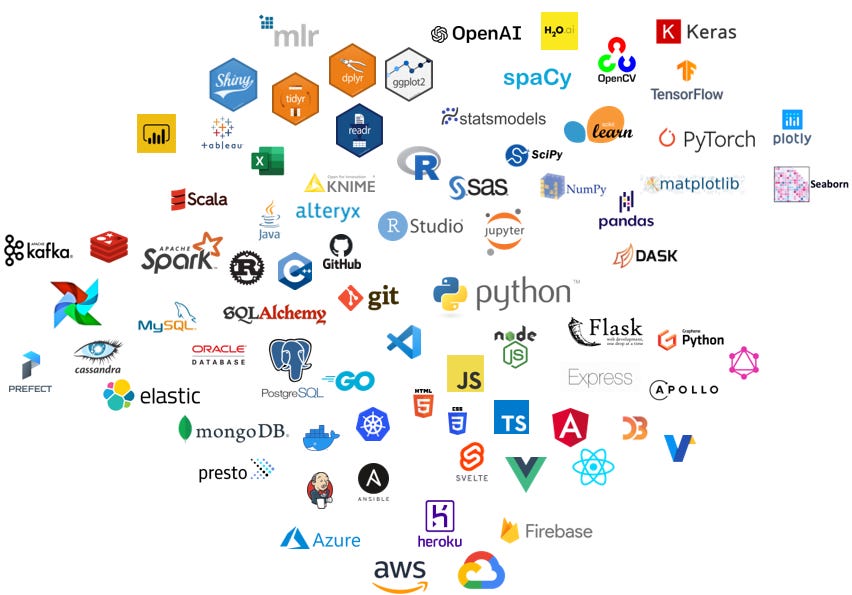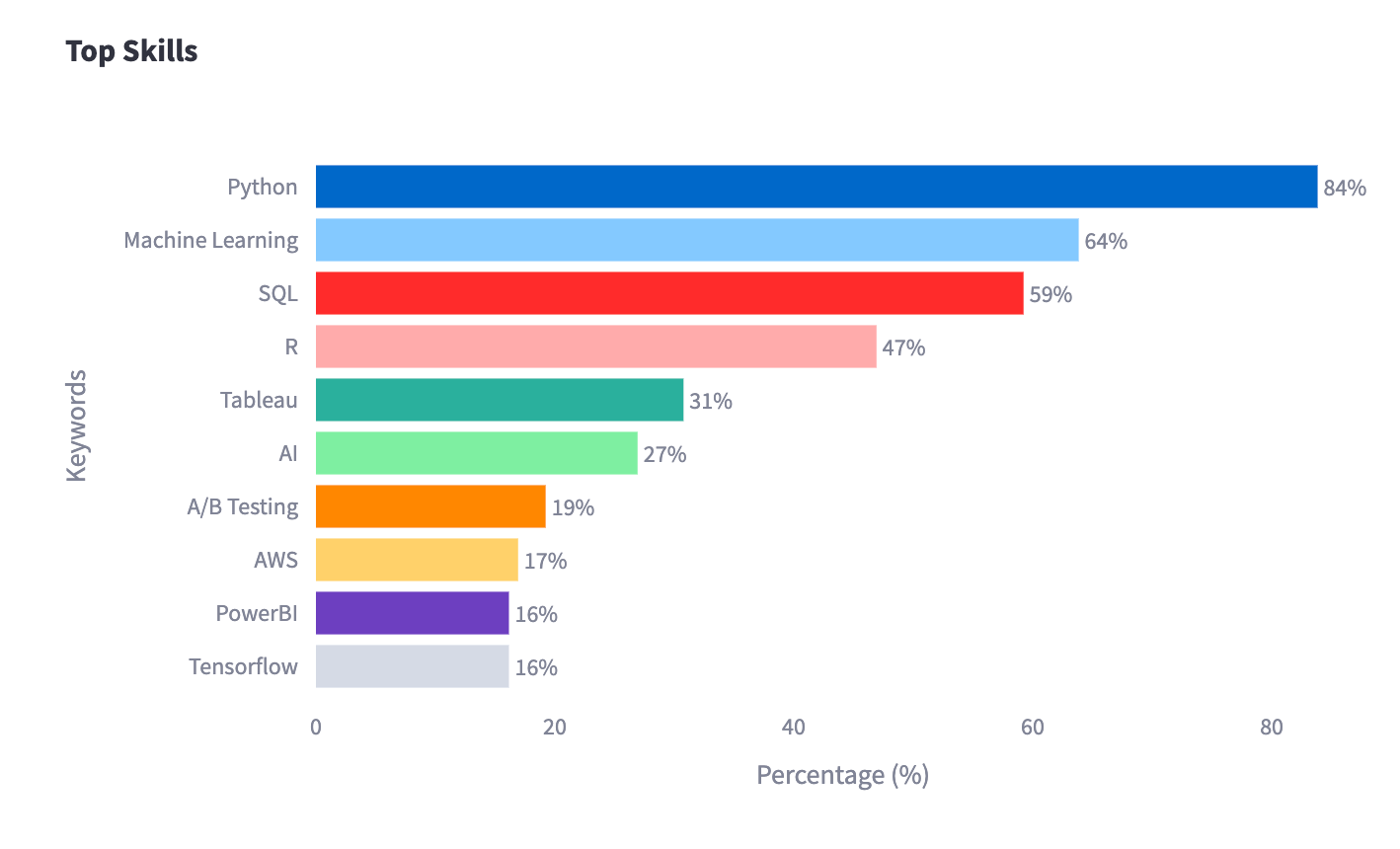Are you struggling with deciding which tools to learn as an aspiring data scientist?
Perhaps one of these questions sounds familiar:
Should I learn PowerBI or Tableau?
Should I still learn Python even though I already know R? or I already know Python, should I also learn R?
Should I get a GCP certification, I read somewhere that is recommended?
If this is you, you’ve come to the right place, and let me tell you, I completely understand your struggle.
The list of data science tools available nowadays seems endless, and it’s growing every month:

So in this article, I will attempt to bring you more clarity and help you avoid going completely insane by attempting to learn them all.
Also, I want to have an article I can share when people reach out to me on LinkedIn asking this question. I can finally stop repeating myself 😮💨
Being Strategic
As you progress through your Data Science career, your toolbox will also continue to grow. You will not only learn the different tools your company uses but also continuously search for the best tools available to help you get the job done.
After all, your mission should be wasting less time with repetitive and meaningless tasks, and more time focusing on analyzing and extracting insights.
But at this point in your career, you shouldn’t worry about learning every tool out there because doing so will take time away from other important activities. Time is limited, so I recommend using it strategically by starting with the tools and skills most in demand for entry-level roles and allocating extra time for activities like doing projects to practice and refine your skills or finding a job, that sort of thing.

Let’s break this down:
Programming Languages
Every Data Scientist is expected to be proficient in SQL and Python (Pandas).
Now, some of you are probably wondering, what about R?
Although R is tailored for statistical analysis and excels at complex data visualization and detailed statistics. Python is more versatile and suits a broader range of data science tasks like data manipulation, analysis, machine learning, and deep learning. It's also the language most companies expect you to know.
💡 I've been working in Tech for over 6 years, and I can tell you with confidence that most Data Scientists use Python in their day-to-day.
If you already know R, then learn Python, this will open many doors of opportunity in your career. If you only have time to learn one, then Python is the best choice.
BI Tools
Every data scientist should have experience working with a BI tool.
But instead of picking Tableau because it is the most popular one, I recommend you first do some research and figure out which BI tools the companies you are interested in working for are using and pick that one.
If you are still unsure, then default to Tableau, it’s the most in-demand and they offer a free public version, which makes it ideal for creating dashboards for your portfolio.
💡 I don’t recommend learning multiple BI tools. Picking one and becoming proficient in it is the best use of your time. Most companies will appreciate you knowing at least one BI tool, as it demonstrates your ability to quickly adapt to their preferred tool.
Cloud Platform
Familiarising yourself with a cloud platform like AWS signals companies that you are ready to integrate with their team much more seamlessly.
Similar to the advice I gave regarding BI tools, I suggest you learn the cloud platform used by the companies you are interested in working for.
But if you are still in doubt, AWS is probably the best choice since it’s the most widely used out there.
💡 Unlike with BI Tools and programming languages, for entry level roles, you are usually not expected to be proficient at any cloud platform, so doing a mini course in it and getting some exposure to it is often good enough.
Summary
In summary, these are the main tools you should know in preparation for entering the job market:
Programming Languages: SQL & Python (Pandas)
BI Tool: Tableau (or the one used by the companies you are applying to)
Cloud Platform: AWS (or the one used by the companies you are applying to)
In addition, you should be quite comfortable using tools like Jupyter Notebook for analysis and GitHub for code version control, even if these tools are not often mentioned in job ads.
📣 Quick announcement:
I just published my first paid post 👇
It has everything you need to know to build a data science portfolio that will bridge the experience gap and catch the eyes of hiring managers.
If you decide to upgrade, you will not only get access to my latest and future paid posts but also some great perks which you can review by clicking the button below:
Why do I have paid posts? Creating detailed content that actually brings you value requires putting in the hours (And believe me, I’m being thorough). By becoming a paid subscriber, you are not just unlocking access to exclusive content, but also making it possible for me to keep bringing both paid and free content that makes a real impact.
Thank you for reading! I hope this helps you feel less overwhelmed about which tools and skills to learn as an aspiring data scientist and gives you a clear path to start building your first data science toolbox in preparation for stepping into the job market.
- Andres
You can also hit the like ❤️ button at the bottom of this email to help support me. It really makes a difference!





One of the best decisions I made in 2017 is to learn python. After learning for 2 months, I decided to double down. It is still paying dividends as I am looking to do web development projects, where I can rely on numerous python frameworks and libraries
100% agree with everything you wrote. I'd add Looker Studio to the BI section as a tool that's often used too and is available for free.